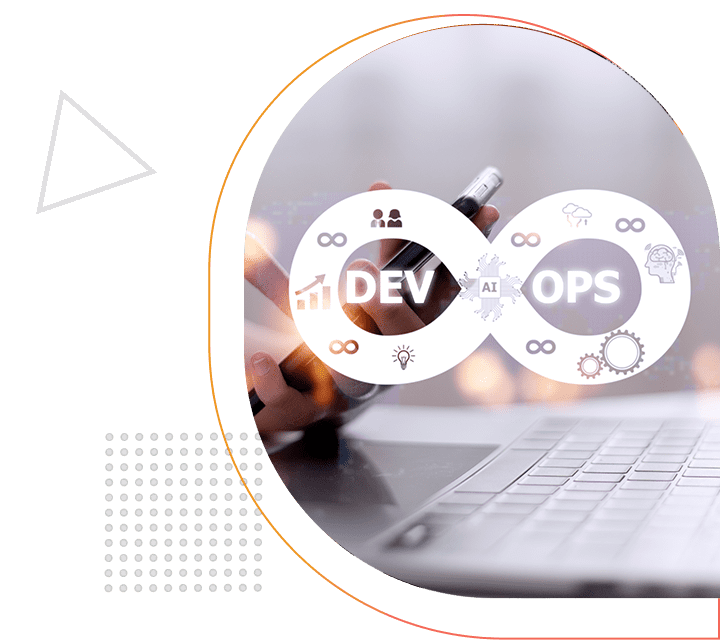Embrace DevOps with Automation and Agile Practices
The requirements in today’s digital world are that solutions must simply be delivered fast and efficiently, and this has led to DevOps, which has revolutionized software development by bridging the gap between development (Dev) and IT operations (Ops). By fostering collaboration and shared responsibility, DevOps brings both teams together to achieve productive results in the software development lifecycle. Gone are the days of siloed work; now, DevOps promotes a culture of teamwork, automation, and streamlined workflows. The focus is on delivering high-quality software rapidly, making it a game-changing methodology in the industry.

Infrastructure Management
Infrastructure management involves planning, deploying, and maintaining an organization's IT infrastructure. This includes setting up and managing servers, storage, networking equipment, and data centers. The goal is to ensure these resources are available, reliable, and scalable to meet the organization's needs while optimizing costs.

Operational Management
Operational management encompasses the day-to-day activities required to run a business efficiently. It involves resource allocation, process optimization, and performance testing, optimization and monitoring. The aim is to maximize productivity, minimize downtime, and enhance overall operational efficiency, in a cost-effective way.

Disaster Recovery
Disaster recovery focuses on bringing back the system to a functional state, in case of an unforeseen event that can bring down the system. This focuses on recovering system and data to restore normal operation. This involves planning and implementing backup, replication and failover strategy.

Release Management
Release management is a systematic process for planning, scheduling, and controlling software releases and updates. It includes defining release criteria, managing deployment processes, and coordinating cross-functional teams to ensure software changes are rolled out smoothly, minimizing user disruptions.

Regular Monitoring
Regular monitoring involves continuous surveillance of IT systems, networks, and applications. It aims to detect and resolve issues proactively, preventing downtime and performance degradation. Monitoring tools provide real-time insights into system health and allow for timely interventions.

Security Management
Security management is a comprehensive approach to safeguarding an organization's digital assets. It involves creating and enforcing security policies, implementing access controls, monitoring for security threats, and responding to security incidents. The goal is to protect data, systems, and networks from cyberattacks.

Configuration Management
Configuration management is the discipline of tracking and controlling changes to software, hardware, and system configurations. It ensures that changes are documented, approved, and properly tested before implementation. Effective configuration management helps maintain system stability and consistency.

Log Management
Log management is the practice of collecting, storing, and analyzing log data generated by IT systems and applications. This data helps in troubleshooting issues, monitoring system performance, and ensuring compliance with regulatory requirements. Log management tools facilitate efficient log storage and analysis.

DevSecOps Consulting
DevSecOps consulting focuses on integrating security practices into the DevOps (Development and Operations) workflow. It emphasizes automation, collaboration, and continuous security testing and implementation, throughout the software development lifecycle. This approach ensures that security is not an afterthought but an integral part of the development process, leading to more secure software applications.
How do we work

Tools & Platforms
Code Management






Cloud




CI/CD


Build


Security Testing

Databases



